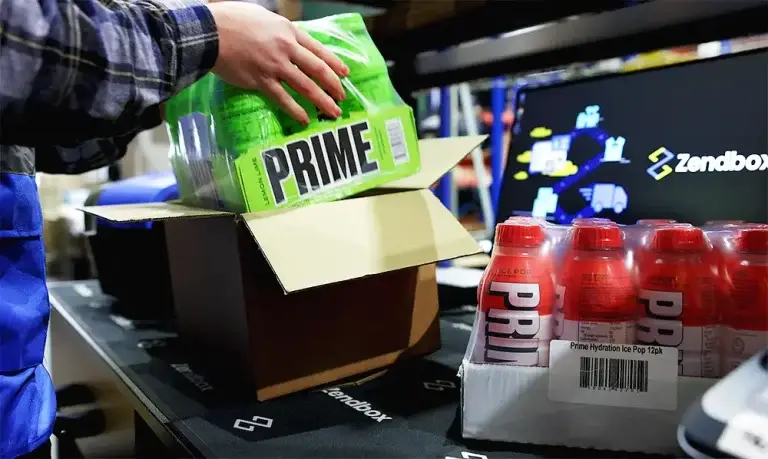Ecommerce retailers will eventually reach a point when they require specialist help with scaling their operations, or instead they may decide to invest in growing their own premises. When it comes to outsourcing shipping, storage and distribution, this is where third-party logistics (3PL) companies can assist. In this article, we will discuss what 3PL services involve, the different types on offer, an example case study, and factors to consider when deciding whether to outsource.
How does third-party logistics work?
An increasingly popular strategic imperative, 3PL involves entrusting a company to take care of your product storage, order processing, inventory analysis, shipping, returns, and for some providers, customer service queries. Working with a 3PL begins with getting set up as a customer. This involves integrating your eCommerce tech stack, with the fulfilment house’s inventory analysis platform. In addition, customer setup involves agreeing on storage, picking, packing, distribution, and returns costs.
After you are set up as a client, your stock will be shipped from your supplier(s) and manufacturer(s) in bulk, directly to the fulfilment centre(s). Then, the goods in team will organise your stock into picking locations.
When a customer places an order, this data will be passed from your eCommerce store, marketplaces, and/or multichannel order management system, on to the fulfilment company. At this point, a picking note is generated, ready for your product to be collected and packed, along with a shipping label, ready for collection by the courier.
Depending on carrier partner(s) selected, your customers will receive various in-flight shipping options, such as timed delivery windows, leave safe place, live order location tracking, and the ability to add notes to their orders. A reputable fulfilment centre will work with a wide range of courier providers, to ensure you work with the most appropriate, depending on your product values, dimensions, weight, insurance requirements, and levels of customer urgency.
What are the different types of logistics outsourcing?
There is a plethora of different types of 3PL, and also, as you may wonder, there are also 1PLs, 2PLs, 4PLs and 5PLs. 3PLs vary in terms of their level of involvement. Some offer deeper integration into your supply chain, and can even assist with manufacturing, whereas others may specialise in things like frozen goods storage, customs clearance, and if apparel, cleaning, hanging and ironing of clothes for resale.
1PL, or first-party logistics refers to when your manufacturer ships directly to your customer. 2PLs are freight forwarding companies that have their own transportation network. 4PLs handle not only the third-party logistics, but multiple 3PL providers under one contract. Then manage the outsourcing of 3PLs, as well as negotiating contracts, analytics and strategy, from a single point of contact. 5PLs deal with everything 4PLs do, but extend their services deeper into the supply chain. They may outsource and manage your manufacturing, technological infrastructure, and customer service outsourcing, along with all other aspects of fourth-party logistics, completely on your behalf.
Fulfilment outsourcing case study: Complete Strength
Selling sports supplements throughout Europe, founder Rob faced staffing and warehousing issues, and decided it would make sense to begin looking for a dedicated third-party logistics provider. The Shopify retailer also faced rising shipping costs, and while they were effective at getting products out to clients, they were missing out on sales. They discovered Zendbox, an eCommerce fulfilment specialist, and thanks to their latest-in-industry order cut-off time, they are now able to offer next day delivery services right up until 10pm. This has helped Complete Strength acquire their competitors’ customers.
The importance of technology in logistics outsourcing
While many fulfilment centres simply manage the order processing, technology-driven 3PLs will also offer inventory analysis technology, to help predict future sales peaks and troughs, based on historic seasonal performance. Clients working with the aforementioned Zendbox, benefit from Zendportal, its in-house inventory analysis tool. This software works in harmony with Zendbox’s fulfilment operations, helping retailers to quickly reorder from suppliers to avoid understocking, and also to predict times to offer discounts on their products from overstocking, to release capital tied up in stock.
Fulfilment outsourcing is growing faster than online retail
While the global eCommerce market in general is expected to grow 150% by 2030, the eCommerce fulfilment sector is predicted to grow 183%, indicating increased market penetration and popularity of 3PL services. With this, forward-thinking 3PLs will need to work harder to stand out from the crowd, and offer services that are truly unique. This means offering greater visibility of the supply chain, developing personalisation services, adopting a more sustainable approach, and investing in emerging technologies such as robotics, RFID tags, and mobile-powered carts.
Deciding whether to outsource eCommerce fulfilment
When a company commits to working with a 3PL, they will need to give up an element of control of their business. But in return, the merchant can be rewarded with cost savings, increased reach, more consistent and higher-performing order processing, technological and operational scalability. Whether you decide to invest in fulfilment insourcing or outsourcing, it’s essential to establish KPIs (key performance indicators) and OKRs (objectives and key results), across all aspects of order processing performance.
77% of poor reviews eCommerce businesses receive, are related to operational failures, such as slow, delayed or late delivery, complete delivery failures, items being listed as out of stock after purchase, inadequate delivery updates, expensive shipping costs, time-consuming returns and poor refund policies. Therefore, finding the right 3PL, by reviewing their case studies and third-party customer feedback, will be critical to your future customer lifetime value.


